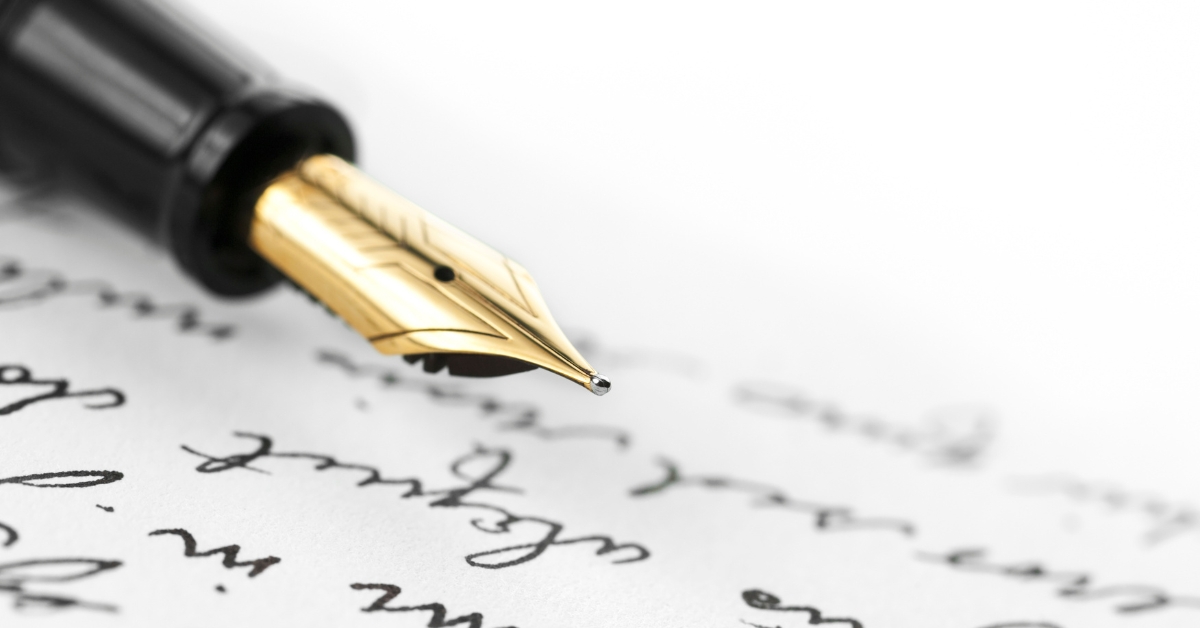
In today’s world, where technology reigns supreme, chat boxes and text messages appear to have pushed the art of writing handwritten letters into oblivion. Undeniably, these digital platforms have made communication faster and more convenient, but what about the heartfelt sentiments of receiving a handwritten letter? Digital messages cannot replicate the unique charm of words slowly etched on paper, the distinctive handwriting, and the effort and thought that every pen stroke embodies. In this blog post, we’ll dive into the art of writing handwritten letters in the digital age and the beauty of reviving this lost form of expression.
The Revival of Handwritten Letters
In a world where emails and text messages have become the norm, it is refreshing to see a revival of the art of letter writing. Advocates are working to bring back this dying art and promote its benefits in bolstering mental health. Writing handwritten letters helps individuals connect with loved ones more personally and meaningfully. The reflective and heartfelt process of putting pen to paper benefits both the writer and the recipient. Initiatives such as Letters of Hope and the 12 Stamps Project have been launched to encourage people to engage in this ancient art. Fleeting digital messages of today often lose the tangible expression of feelings and appreciation that writing letters provides.
A handwritten letter can also be read repeatedly for many years, preserving history and leaving a legacy for future generations. Their handwriting offers a glimpse into the past and the writer’s thoughts, feelings, hopes, fears, loves, and dreams. With the benefits of letter writing becoming increasingly known, it is time for individuals to pause, sit down, and write a letter to someone they care about.
Enduring Sentiments: The Power of Handwritten Messages
In a world driven by technology, the art of writing and receiving handwritten letters is rapidly fading away. However, this traditional form of communication holds a power that digital messages cannot replicate. Handwriting serves as a way to express one’s identity and personality, providing a glimpse into the writer’s soul. Throughout history, letters have captured human emotions, thoughts, and relationships, serving as powerful time capsules that preserve our past selves and those who have shaped our existence. Love letters, in particular, reveal the depths of human relationships and leave a lasting impact on the reader. For women, letter writing has been a means to communicate and express themselves without identifying as writers.
Handwritten messages create a sense of intimacy and closeness that digital messages cannot replicate. They are personal and timeless and serve as a reminder of a time when communication was more intimate and meaningful. Handwriting has also been proven to relieve stress and promotes mental calm while helping with creativity and self-expression. So, it’s time to reclaim this lost art and rediscover the magic of pen and paper. Writing a handwritten letter lets us connect with people deeper, take a break from our screens, and slow down. Let’s revive the art of writing handwritten letters and preserve these messages’ sentiments.
Benefits of Writing by Hand in the Digital Age
In the digital age, writing by hand may seem outdated and unnecessary. However, numerous benefits of handwriting are often overlooked. Firstly, handwriting remains an essential functional skill, particularly for academic examinations, as students who cannot write legibly and articulately face disadvantages. Furthermore, writing by hand has cognitive benefits, reinforcing reading and language processing skills and improving memory.
Handwriting can also benefit creative writing, allowing for greater freedom and flexibility in the thought process. Pen and paper can be less restrictive than digital tools, facilitating freeform and innovative thinking. Additionally, writing by hand is a unique and irreplaceable part of our culture, as each individual’s handwriting style is distinct and difficult to replicate. Handwritten letters, cards, and correspondences convey a personal touch that digital communication cannot replicate, making them invaluable in societies saturated with technology. In conclusion, numerous benefits of handwriting make it an important skill to preserve and revitalize, even in the digital age.
How to Make Writing a Letter Easier and Enjoyable
Writing a handwritten letter may seem daunting in the digital age, but it doesn’t have to be. There are some simple ways to make the process easier and more enjoyable. Firstly, choose good quality writing materials and find a comfortable space to sit and write. Using a pen that feels comfortable in your hand and quality paper will help to make the writing experience more enjoyable. Next, think about what to write and jot down some ideas beforehand. Finally, it’s important to keep the tone friendly and personal and share something about yourself or ask a question about the recipient’s life. Remember to mention something specific about the recipient to show that you have put time and thought into the letter.
Another tip is to consider your audience. It is recommended to keep the letter concise and to the point for business letters. Long-winded letters can be overwhelming and take away from the personal touch of a handwritten letter. On the other hand, family members may enjoy all of the details you can fill your letter with.
Finally, take the time to proofread the letter for any grammatical errors before sending it off. A well-written letter is a joy to receive and can bring people closer together. Writing a handwritten letter may take longer than an email or text, but the effort is worth it. It’s an opportunity to disconnect from the digital world and express sentiments more intimately and personally. So, take the time to write a letter and share some sentiments with loved ones who will appreciate the gesture.
Making Writing Letters Part of Your Life Again
In today’s digital age, writing handwritten letters has become increasingly rare. However, there are numerous reasons why individuals should consider making writing letters part of their lives again. Firstly, taking the time to handwrite a letter demonstrates a level of thoughtfulness and consideration that cannot be replicated through a text message or email. Additionally, receiving a handwritten letter can be a nostalgic and heartwarming experience, evoking emotions that may not be present in purely digital communication.
Writing letters can also be a form of self-care, allowing individuals to disconnect from technology and practice mindfulness. Furthermore, written letters create lasting memories that people can cherish for years, offering a tangible connection to the past. Lastly, writing letters can help individuals stay connected to loved ones who are far away or unable to communicate through digital means. In sum, while the convenience of digital communication is undeniable, making writing letters a part of one’s life again can add depth, sentimentality, and a level of personal connection often missing in today’s society.
Keeping Handwritten Correspondence Alive
Despite the growing prevalence of digital communication, advocates still wish to keep the tradition of handwritten correspondence alive. Emails or texts cannot replicate the personal and sentimental feelings that writing a letter or a note card by hand invokes. Scientific research has proven that handwriting effectively relieves stress and promotes mental calm, thereby making it a beneficial tool for mental health. Writing by hand also helps with creativity and self-expression, allowing individuals to develop their unique writing style. Handwritten letters, timeless in nature, offer opportunities to slow down and engage in a reflective and heartfelt process that screens cannot accomplish. It is a tactile experience that invokes the senses and provides a physical keepsake that can be stored and revisited for years.
Initiatives, such as Letters of Hope, allow individuals to connect with others and express their feelings and appreciation more meaningfully. The 12 Stamps Project encourages people to commit to sending twelve handwritten notes or letters over the next year, promoting literacy and human connection. Though the teaching of cursive writing in schools has dwindled, a desire remains to keep the art of letter writing alive. Putting pen to paper provides a tactile and reflective experience that cannot be replicated digitally. It is a personal and meaningful way to connect with others and express emotions.
Conclusion
We should revive the art of writing handwritten letters in the digital age. Digital communication cannot replicate the personal touch and emotional impact that receiving a physical letter with a stamp and handwritten message provides. While technology offers convenience and speed, it is important to remember the value of carefully crafting and sending a letter through the mail. Handwriting allows for self-expression and creativity and can even relieve stress. Unlike digital messages lost in an inbox or deleted with a button click, the tangibility of a handwritten letter gives it a lasting presence in real life. We should revive this lost art to preserve personal connections and sustain relationships. down and connect with others meaningfully. As technology advances, it is important to remember how a handwritten letter can impact someone’s life. Let us bring back the sentimentality and nostalgia of letter-writing and revive this art for future generations.
The post “Handwritten Letters in the Digital Age: Reviving a Lost Art Form” was first published on WrittenLetters.com.
